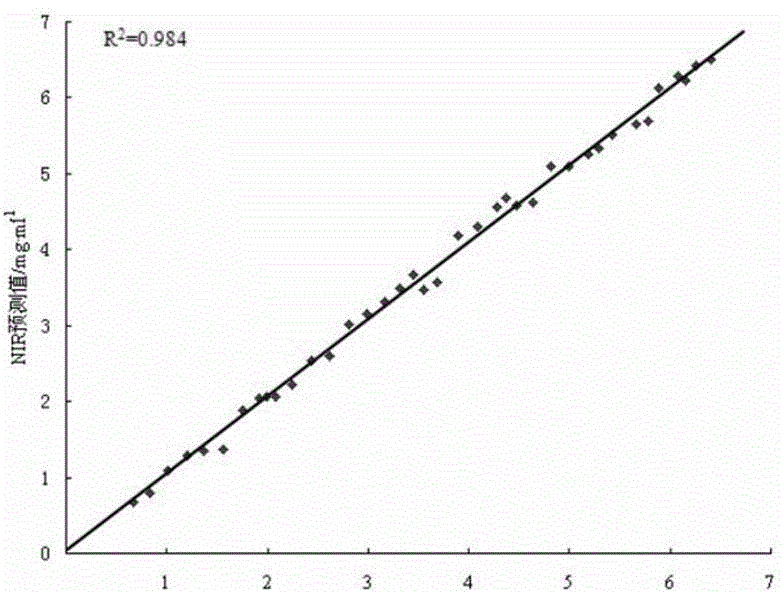Detection method for adulterated sesame oil
A detection method, the technology of sesame oil, is applied in the field of detection of adulterated sesame oil, which can solve the problems of harming the interests of consumers and achieve the effects of fast detection speed, high operation skills and good application prospects
- Summary
- Abstract
- Description
- Claims
- Application Information
AI Technical Summary
Problems solved by technology
Method used
Image
Examples
preparation example Construction
[0029] (2) Preparation of oil samples: blending soybean oil, peanut oil and cottonseed oil into sesame oil respectively according to different mixing ratios to form multiple mixed oil samples mixed with soybean oil, peanut oil and cottonseed oil respectively; and The mixed oil samples are divided into calibration set samples and calibration set samples according to certain rules.
[0030] The calibration set samples are as follows: the mixed oil samples are sorted from low to high according to the mixing ratio, and samples with serial numbers 1, 2, 4, 5, 7, 8, 10, ... are selected into the calibration set;
[0031] The samples of the verification set are: the samples of the remaining samples 3, 6, 9, ... in the above sorting are selected into the verification set;
[0032] (3) Determination of fatty acid content: Utilize gas phase spectrometry to measure the content of myristic acid, linolenic acid, arachidic acid and wood tar acid in all mixed oil samples in step (2), obtain ...
Embodiment 1
[0039] Embodiment 1: the detection that mixes soybean oil in the sesame oil
[0040]Soybean oil was blended into sesame oil in different proportions, and 9 mixed oil samples were randomly prepared. First, use gas chromatography to measure the content of linolenic acid in these 9 oil samples as the chemical value, then collect the oil samples by infrared spectrum, and use the established model to measure the content of linolenic acid as the predicted value, the chemical value of linolenic acid The relative deviation of the value and predicted value is less than 7.7%, the results are as follows figure 1 shown.
Embodiment 2
[0041] Embodiment 2: the detection that mixes peanut oil in sesame oil
[0042] Peanut oil was blended into sesame oil in different proportions, and 9 mixed oil samples were randomly prepared. First, use gas chromatography to measure the content of arachidic acid and wood tar acid in these 9 oil samples as chemical values, then carry out infrared spectrum collection on the oil samples, and use the established model to measure the content of arachidic acid and wood tar acid As predicted values, the relative deviations of the chemical and predicted values of arachidic acid and wood tar acid were both less than 6.2%, and the results were as follows figure 2 , 3 shown.
PUM
 Login to View More
Login to View More Abstract
Description
Claims
Application Information
 Login to View More
Login to View More - R&D
- Intellectual Property
- Life Sciences
- Materials
- Tech Scout
- Unparalleled Data Quality
- Higher Quality Content
- 60% Fewer Hallucinations
Browse by: Latest US Patents, China's latest patents, Technical Efficacy Thesaurus, Application Domain, Technology Topic, Popular Technical Reports.
© 2025 PatSnap. All rights reserved.Legal|Privacy policy|Modern Slavery Act Transparency Statement|Sitemap|About US| Contact US: help@patsnap.com



